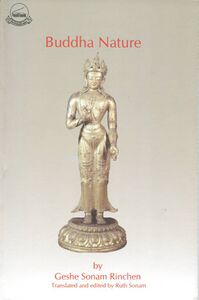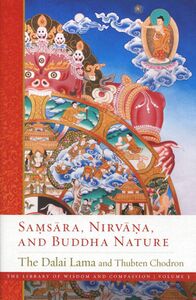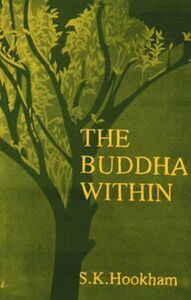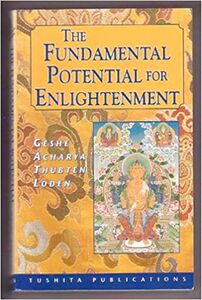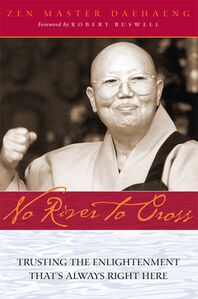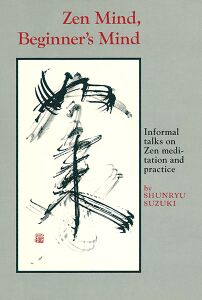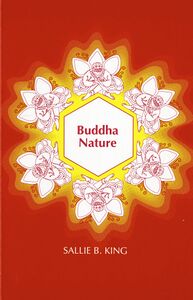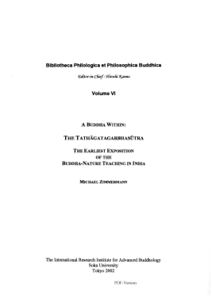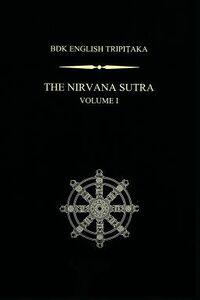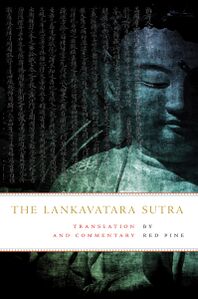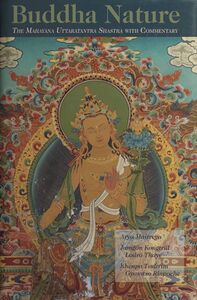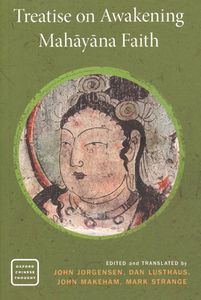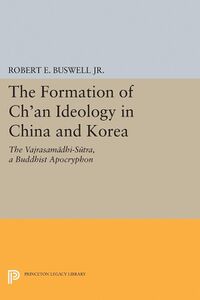Begin Discovering Your Buddha-Nature: Difference between revisions
From Buddha-Nature
((by SublimeText.Mediawiker)) |
((by SublimeText.Mediawiker)) |
||
| Line 221: | Line 221: | ||
}} | }} | ||
</div> | </div> | ||
</div> | |||
<div class="vienna-gradient pt-5 pb-4"> | |||
<div class="position-relative pl-4 section-header text-90">Articles</div> | |||
<div class="row m-0 px-lg-5 pt-4"> | <div class="row m-0 px-lg-5 pt-4"> | ||
{{LocalTile | {{LocalTile | ||
| Line 230: | Line 231: | ||
|link=Articles/Mind_Is_Buddha | |link=Articles/Mind_Is_Buddha | ||
|header=Mind Is Buddha | |header=Mind Is Buddha | ||
|image=https://commons.tsadra.org/images-commons/9/99/Arnold_Geoffrey_Shugen_Wikipedia.jpg | |||
|content=Geoffery Shugen Arnold, Sensei, on Case 30 of the Gateless Gate, “Mazu’s ‘Mind is buddha.'” | |content=Geoffery Shugen Arnold, Sensei, on Case 30 of the Gateless Gate, “Mazu’s ‘Mind is buddha.'” | ||
|watermark=Article | |||
}} | }} | ||
{{LocalTile | {{LocalTile | ||
| Line 240: | Line 241: | ||
|image=https://commons.tsadra.org/images-commons/3/35/Blacker_Melissa_Personal_Website.jpg | |image=https://commons.tsadra.org/images-commons/3/35/Blacker_Melissa_Personal_Website.jpg | ||
|content=Original sin vs. original goodness: Mahayana Buddhism offers a more hopeful view of human nature. | |content=Original sin vs. original goodness: Mahayana Buddhism offers a more hopeful view of human nature. | ||
|watermark=Article | |||
}} | }} | ||
{{LocalTile | {{LocalTile | ||
| Line 250: | Line 251: | ||
|watermark=Article | |watermark=Article | ||
}} | }} | ||
{{LocalTile | |||
|classes=col-sm-6 col-lg-6 | |classes=col-sm-6 col-lg-6 | ||
|link=Articles/Impermanence_is_Buddha_Nature | |link=Articles/Impermanence_is_Buddha_Nature | ||
|header=Impermanence Is Buddha Nature | |header=Impermanence Is Buddha Nature | ||
|image=https://commons.tsadra.org/images-commons/8/88/Fischer_norman.jpg | |||
|content=Change isn’t just a fact of life we have to accept and work with, says Norman Fischer. Practitioners have always understood impermanence as the cornerstone of Buddhist teachings and practice. | |content=Change isn’t just a fact of life we have to accept and work with, says Norman Fischer. Practitioners have always understood impermanence as the cornerstone of Buddhist teachings and practice. | ||
|watermark=Article | |||
}} | }} | ||
{{LocalTile | |||
|classes=col-sm-6 col-lg-6 | |classes=col-sm-6 col-lg-6 | ||
|link=Articles/On_the_Awakening_of_Faith_in_the_Mahāyāna | |link=Articles/On_the_Awakening_of_Faith_in_the_Mahāyāna | ||
|header=On the ''Awakening of Faith in the Mahāyāna'' | |header=On the ''Awakening of Faith in the Mahāyāna'' | ||
|image=https://commons.tsadra.org/images-commons/5/50/Alexander_Gardner.jpg | |||
|content=An introduction to the Awakening of Faith, an immensely important treatise popular in all traditions of Buddhism in East Asia. | |content=An introduction to the Awakening of Faith, an immensely important treatise popular in all traditions of Buddhism in East Asia. | ||
|watermark=Article | |||
}} | }} | ||
{{LocalTile | |||
|classes=col-sm-6 col-lg-6 | |classes=col-sm-6 col-lg-6 | ||
|link=Articles/The_Path_of_Gratitude | |link=Articles/The_Path_of_Gratitude | ||
|header=The Path of Gratitude | |header=The Path of Gratitude | ||
|image=https://commons.tsadra.org/images-commons/f/fb/Jeff_wilson_dailybuddhism.jpg | |||
|content=In Shin Buddhism, we don’t practice to achieve anything—not enlightenment, good karma, a favorable rebirth, or material rewards. We practice simply to give thanks for what we have received. | |content=In Shin Buddhism, we don’t practice to achieve anything—not enlightenment, good karma, a favorable rebirth, or material rewards. We practice simply to give thanks for what we have received. | ||
|watermark=Article | |||
}} | |||
</div> | |||
<div class="position-relative pl-4 section-header text-90">Articles</div> | |||
<div class="d-flex justify-content-around flex-wrap"> | |||
{{ExploreBook | |||
|page=Books/No_River_to_Cross | |||
|image=File:No River to Cross-front.jpg | |||
|authorimage=People/Daehaeng | |||
|name=[[People/Daehaeng|Daehaeng]] | |||
|title=No River to Cross | |||
}} | |||
{{ExploreBook | |||
|page=Books/Zen_Mind,_Beginner's_Mind | |||
|authorimage=People/Suzuki,_S. | |||
|name=[[People/Suzuki,_S.|Suzuki]] | |||
|title=Zen Mind, Beginner's Mind | |||
}} | |||
{{ExploreBook | |||
|page=Books/Buddha_Nature_(Sallie_King) | |||
|authorimage=People/King,_S. | |||
|name=[[People/King,_S.|King]] | |||
|title=Buddha Nature | |||
}} | }} | ||
</div> | </div> | ||
</div> | </div> | ||
<div class="col-12 border-top-redfade my-5"></div> | <div class="col-12 border-top-redfade my-5"></div> | ||
{{FeaturedItem | {{FeaturedItem | ||
Revision as of 15:55, 6 January 2021
Discover
Discover how buddha-nature is articulated in various Buddhist traditions by exploring multimedia, articles, books, and translations of primary sources from leading Buddhist teachers and academics. This page brings together a collection of curated resources designed to make the concept of buddha-nature understandable and accessible to a general audience.
Buddha-Nature in Tibet
Multimedia
On How Beginning Students Might Engage with Buddha-Nature Teachings by Ringu Tulku
Ringu Tulku talks about how beginning students might start to orient themselves toward buddha-nature teachings in practice. He explains that it is important to recognize that everybody has the seed of wisdom and compassion within them.
Articles
Books
Buddha-Nature in East Asia
Multimedia
Articles
Articles
Study the Sources
The seeds of buddha-nature teachings are sprinkled throughout the sutras and tantras of the Buddhist canon. A core group of scripture that initially taught buddha-nature known as the tathāgatagarbha sūtras date between the second and fourth centuries. These include the Tathāgatagarbhasūtra, the Mahāparinirvāṇasūtra, the Śrīmālādevīsūtra and several others. The famous Laṅkāvatārasūtra was also important for buddha-nature theory. In Tibetan Buddhism the late-Indian treatise Ratnagotravibhāga Mahāyānottaratantraśāstra, or Gyü Lama as it is known in the Tibetan, serves as a major source for buddha-nature. In East Asia the Awakening of Faith in the Mahāyāna (大乗起信論) and the Vajrasamādhisūtra were the most influential treatises in spreading buddha-nature theory. And in Japan, the Zen master Dōgen (1200–1253), whose instructional lectures were collected in his Shōbōgenzo, also wrote extensively on the topic of buddha-nature. All of these important buddha-nature texts have been translated into English by leading scholars and translators. Below is a selection of these works:
Buddha-Nature in Translation
More from the Experts
Alex Gardner served as the writer-in-residence for Tsadra Foundation's Buddha-Nature Project from 2017-2019. Read his introductory articles on the Ratnagotravibhāga and the history of buddha-nature theory.
Discover More Resources
The Literature
Texts and multilingual resources.
expand
The Library
A curated space for publications on buddha-nature.
expand
More on Buddha-Nature

